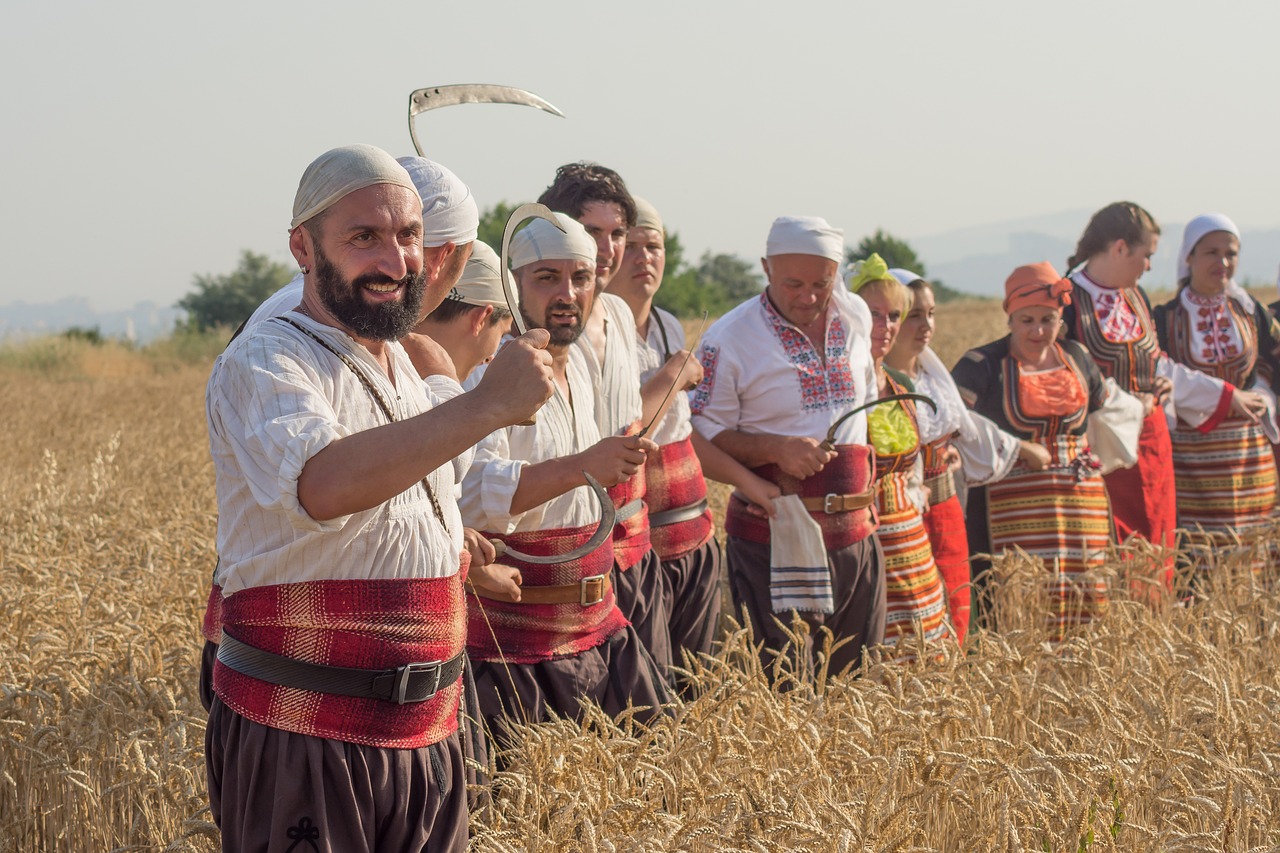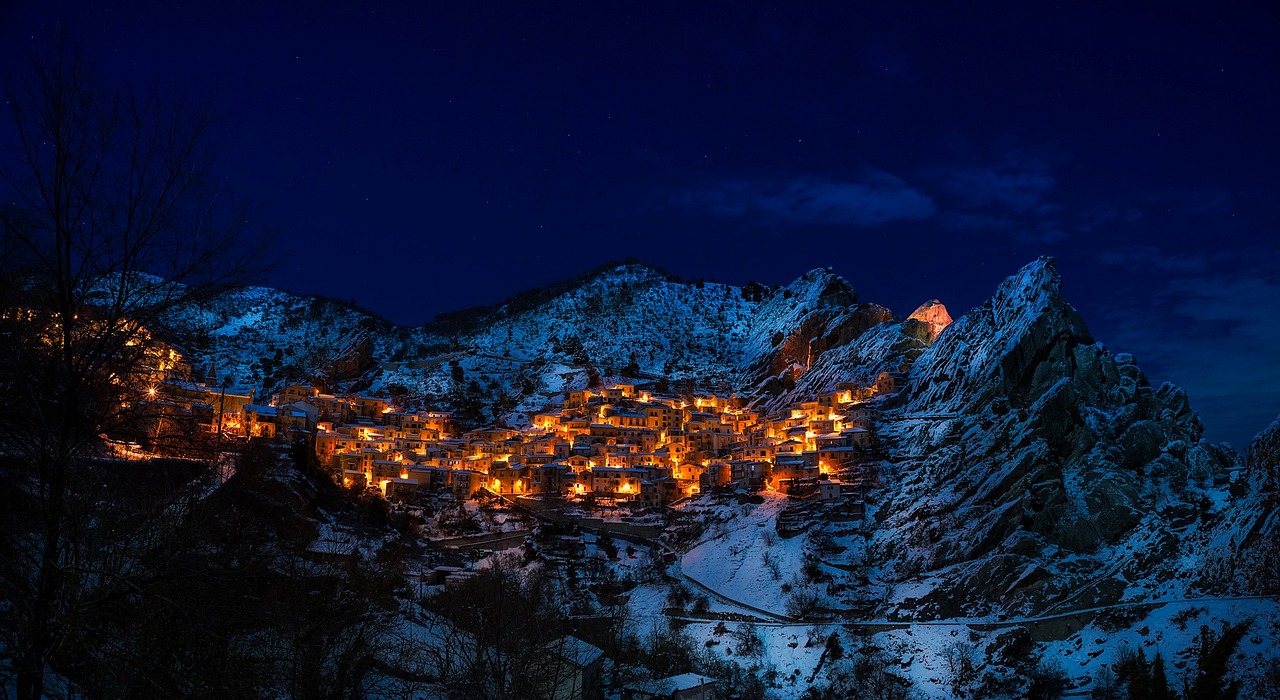In the heart of Bulgaria lies a hidden gem, a place of enchantment and mystery. Tucked away amidst the rolling hills of Starosel, the Thracian Temple Complex awaits those who dare to venture into its ancient embrace. Like a mythical creature, this complex emerges from the depths of time, bearing witness to the rich history and architectural prowess of the Thracian civilization.
Dating back to the end of the 5th and beginning of the 4th century BC, this complex is a testament to the grandeur and sophistication of its builders. It consists of six underhill temples and royal burials, each shrouded in a veil of secrecy and allure. The large temple at Chetinyova Mogila and the Horizon temple, with its statues of lions guarding the entrance, are open to visitors seeking to unravel the mysteries within.
As you step foot into this sacred place, you will be captivated by the intricate details of the architecture. The walls, built with processed granite blocks, encircle the entire hill, creating a sense of reverence and protection. It is here that the Thracians performed their religious ceremonies, paying homage to the Mother Goddess, the Sun, and the legendary figure of Orpheus.
Beyond the temples, the complex holds another wonder—a warehouse for wine and water, a testament to the Thracians’ appreciation for the finer things in life. The artifacts discovered during archaeological excavations can be admired at the National History Museum and Archaeological Museum in Sofia, offering a glimpse into the rich tapestry of Thracian culture.
For those seeking freedom from the mundane, the Thracian Temple Complex in Starosel beckons. With its hidden treasures and ancient wisdom, it invites you to embark on a journey of discovery, to unlock the secrets of a civilization long forgotten. Step into the enchantment and let the whispers of the past guide you through this mesmerizing world.
Key Takeaways
- The Thracian Temple Complex in Starosel, Bulgaria is the oldest royal Thracian complex with a mausoleum, dating back to the end of the 5th and beginning of the 4th century BC.
- The complex consists of six underhill temples and royal burials, with the large temple at Chetinyova Mogila and Horizon temple open for tourist visits.
- The temple complex is surrounded by a wall made of processed granite blocks, and the entrance features a parade staircase and statues of lions.
- The temple was used for religious ceremonies related to the cult of the Mother Goddess, Sun, and Orpheus, and it also housed a warehouse for wine and water.
What is it?
The Thracian Temple Complex in Starosel is an ancient archaeological site consisting of six underground temples and royal burials, dating back to the end of the 5th and beginning of the 4th century BC. This complex holds significant cultural and historical importance, showcasing the rich symbolism and rituals of the Thracian civilization. The temples were dedicated to religious ceremonies related to the cult of the Mother Goddess, Sun, and Orpheus. The complex also serves as evidence of the Thracian culture’s influence on neighboring civilizations. The intricate architecture and design of the temples, such as the decorative semi-columns and tryglyphs, reflect the exceptional craftsmanship of the Thracian people. Through their rituals and beliefs, the Thracians left a lasting legacy that continues to fascinate and captivate visitors today.
History and Architecture
Dating back to the end of the 5th and beginning of the 4th century BC, the Thracian Temple Complex in Starosel stands as the oldest royal complex of its kind with a mausoleum. The architecture of the complex showcases various artistic influences in Thracian temple design. The entrance of the temple features a parade staircase adorned with statues of lions, leading to a flat platform used for ritual dances. A corridor leads to the real facade of the temple, which displays decorative semi-columns and tryglyphs. The religious ceremonies performed in the temple were closely related to the cult of the Mother Goddess, highlighting the significance of this deity in Thracian religion. This temple complex, along with its intricate architecture and religious significance, provides valuable insights into the rich cultural heritage of the Thracian civilization.
Visiting Information
Visiting the Thracian Temple Complex in Starosel provides an opportunity to explore the rich cultural heritage of the ancient Thracian civilization. Guided tours are available for visitors to fully understand the historical significance and architectural features of the complex. The complex consists of six underhill temples and royal burials, with the main attractions being the large temple at Chetinyova Mogila and the Horizon temple. The complex is surrounded by a wall made of processed granite blocks, and the entrance is marked by a parade staircase and statues of lions. Inside, visitors can admire the flat platform used for ritual dances and the corridor leading to the real facade of the temple with decorative semi-columns and tryglyphs. The complex is also known for its religious ceremonies related to the cult of the Mother Goddess, Sun, and Orpheus. Additionally, there is a warehouse for wine and water located on the north part of the mound.
When visiting the Thracian Temple Complex, it is worth exploring nearby attractions such as the Horizon Mound, located in the Manastircheto locality, only 1.5 km from Starosel village. This temple dates back to the end of the 5th and beginning of the 4th century BC and is the only Thracian temple found with a colonnade. Another recommended place to visit is the National History Museum and Archaeological Museum in Sofia, where finds from the archaeological diggings can be seen. For further information and assistance, tourists can visit the Hisarya Tourist Information Center, located at 23, Gurko Blvd. Guided tours are conducted in Bulgarian and Russian language, providing detailed information about the Horizon temple when visiting the Chetinyova Mogila temple complex. The temple complex is open Monday to Sunday from 8:30-16:30, and there is no tax required for visiting. The road to the complex is easily accessible, with an asphalted road and a parking lot available.
Frequently Asked Questions
What is the significance of the Thracian Temple Complex in Starosel in relation to Thracian culture?
The Thracian Temple Complex in Starosel holds great significance in relation to Thracian culture. As the oldest royal Thracian complex with a mausoleum, it provides valuable insights into the religious ceremonies and burial practices of the Thracian people.
Are there any special rituals or ceremonies that take place at the temple complex?
Special rituals and ceremonies were performed at the Thracian Temple Complex in Starosel. These religious ceremonies were related to the cult of the Mother Goddess, the Sun, and Orpheus. The complex provided a sacred space for these important cultural practices.
Can visitors explore the royal burials within the temple complex?
Visitors have the opportunity to explore the royal burials within the Temple Complex in Starosel, Bulgaria. These burials hold historical significance, as they date back to the end of the 5th and beginning of the 4th century BC.
Is there an entrance fee to visit the Thracian Temple Complex in Starosel?
There is no entrance fee to visit the Thracian temple complex in Starosel. Visitors can explore the complex and its royal burials without having to pay for admission.
Are there any nearby attractions or places of interest that visitors can explore after visiting the temple complex?
After visiting the Thracian Temple Complex in Starosel, visitors can explore nearby attractions such as Ribaritsa, Panagyurishte, and the waterfalls in Bulgaria. They can also indulge in the local cuisine, experiencing the flavors of the region.












